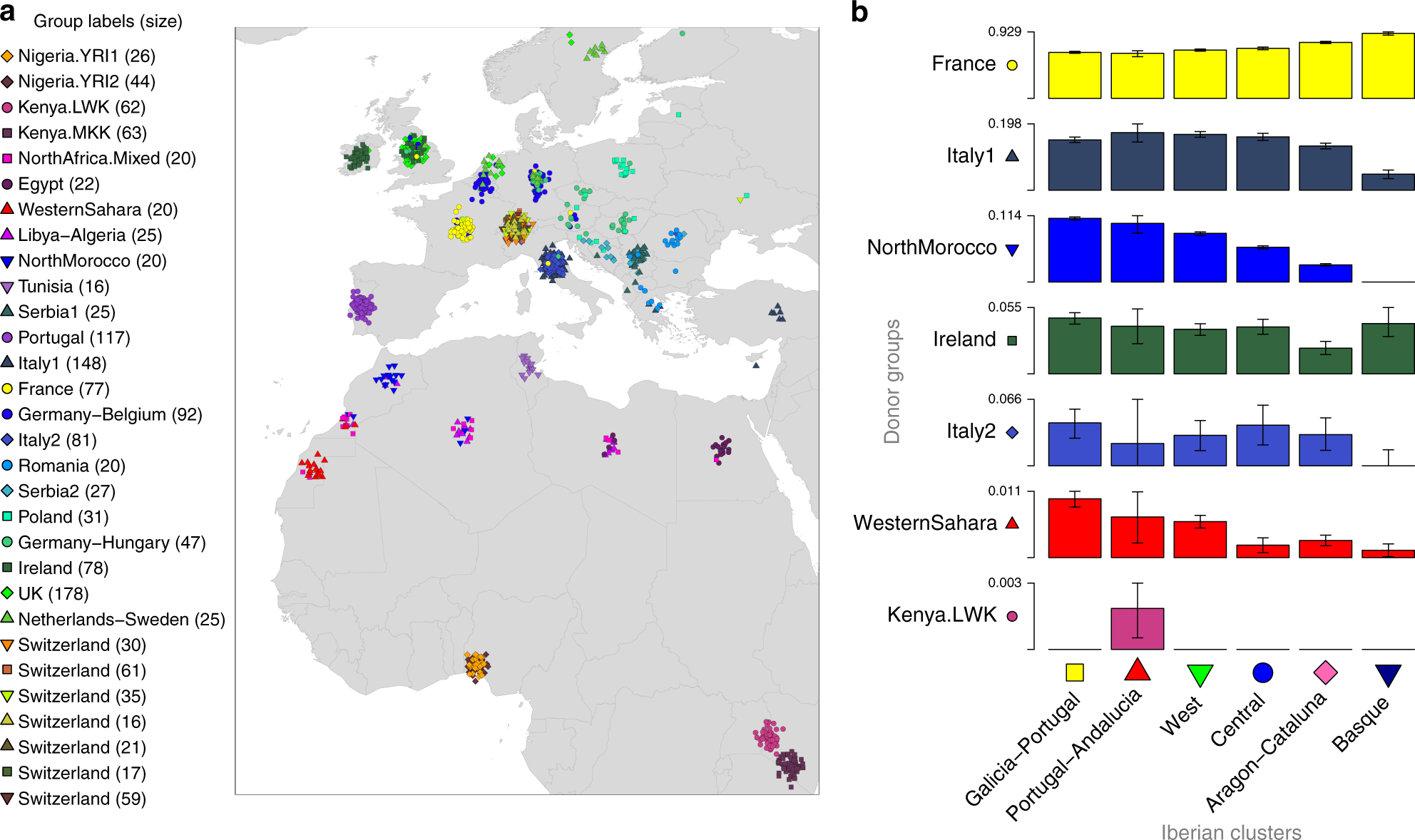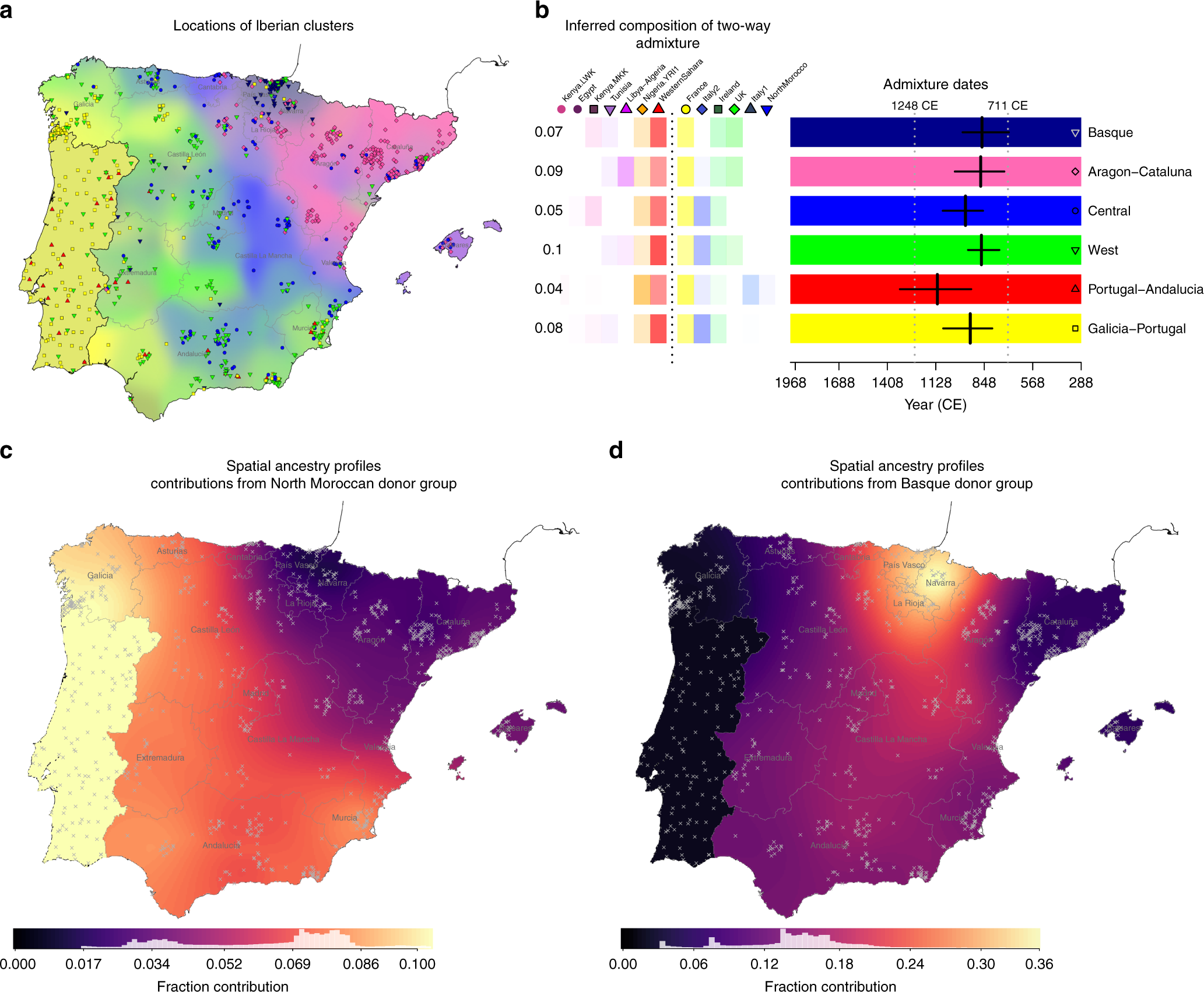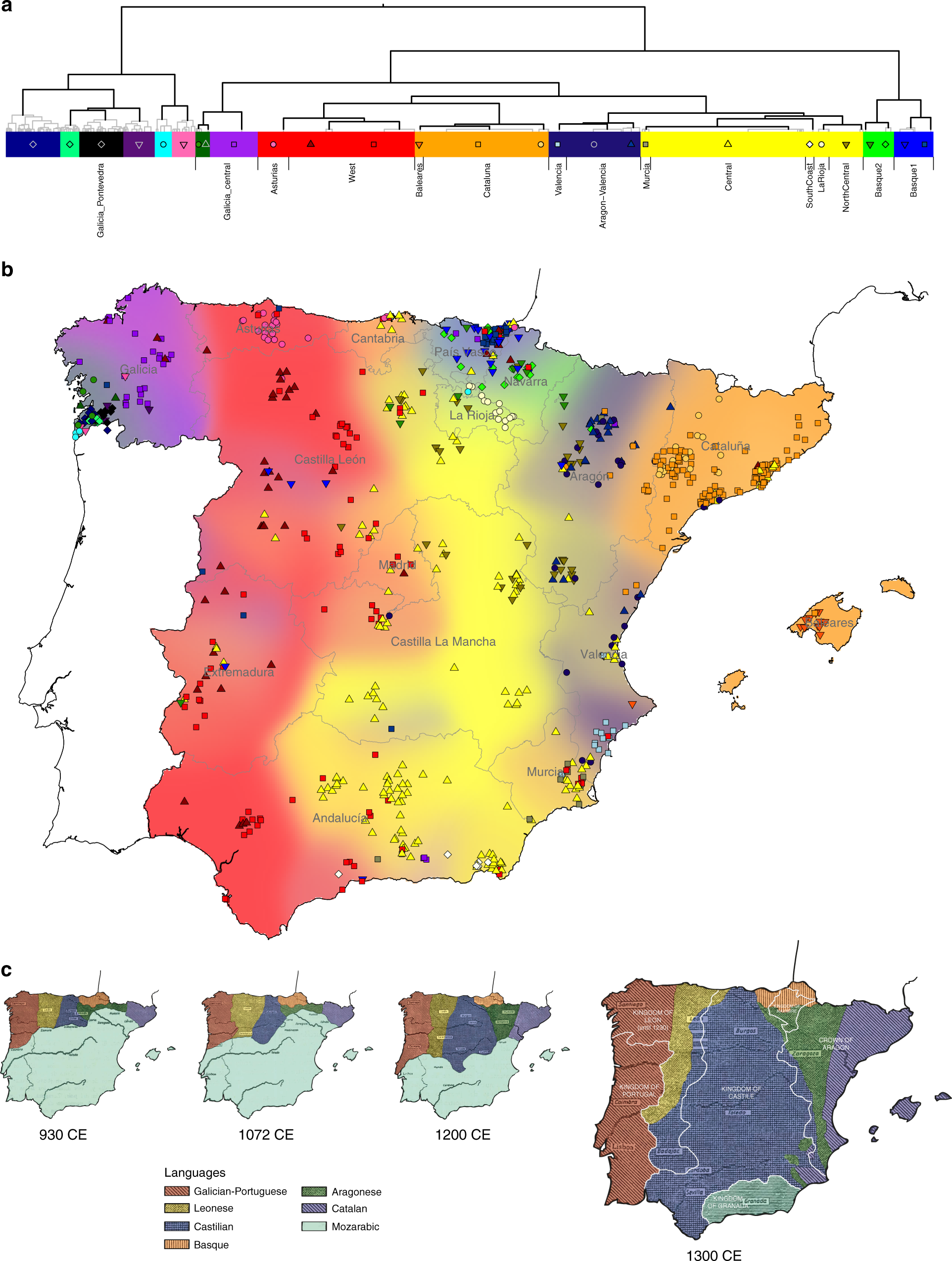Install the app
How to install the app on iOS
Follow along with the video below to see how to install our site as a web app on your home screen.

Note: This feature currently requires accessing the site using the built-in Safari browser.
You are using an out of date browser. It may not display this or other websites correctly.
You should upgrade or use an alternative browser.
You should upgrade or use an alternative browser.
What would explain this in Catalonia?
- Thread starter Ack
- Start date
Regio X
Regular Member
- Messages
- 1,109
- Reaction score
- 480
- Points
- 0
By the way, where is it stated that in Catalonia there is no genetic imprint of the Moors? I would like to read more about this.
Farstar, in the case you're interested, I found this paper on the subject:When Moorish arrived in Iberia, they possibly had a bit of shared ancestry with Europeans too. They must have carried Taforalt-like and also other components then, but I have no idea on the impact of "actual" Moorish DNA over Iberia.
Patterns of genetic differentiation and the footprints of historical migrations in the Iberian Peninsula
https://www.nature.com/articles/s41467-018-08272-w
It was discussed here:
https://www.eupedia.com/forum/threads/35638-New-autosomal-analysis-of-Iberia
The Moorish genetic contribution would vary substantially among Iberians, which is expected. We see in the Supplementary:
"The North Moroccan component steadily declines from 11% in the far west to near 0% in the Basque region. The pattern of North Moroccan contributions is similar to the Western Saharan contributions, and approximately opposite to the pattern of French contributions."
About Basques they say:
"Specifically the Basque share even more DNA with the French group than predicted by their mixture representation, which might reflect, for example, that the DNA the Basque share with present-day French is only a subset of modern French ancestry. This pattern is seen for other Spanish groups also, but to a much lesser extent."
Galicia-Portugal seems to have the highest contribution from Morocco (11%), while Aragon-Cataluna has the lowest (apart Basques):

More (you can find a more complete version in Figure 5 at Supplementary Info:

Patterns of genetic differentiation:

It doesn't perfectly correlate to E-M81 map from Eupedia:

Later I'll try to see how all the above relate with Taforalt admixture according to G25:
http://g25vahaduo.genetics.ovh/
Yes, it can cause problems sometimes. If the populations are far enough genetically, even being from different times, it's better. It also depends on the goal, I guess. Sometimes people use related pops to separate "extra" ancestry. Or they may want to "overfit" the model to better isolate some specific component and estimate a minimal contribution of it. In this case, the %s per se as a whole would not matter that much; just a specific one would be more, say, "informative".
@Carlos
When Moorish arrived in Iberia, they possibly had a bit of shared ancestry with Europeans too. They must have carried Taforalt-like and also other components then, but I have no idea on the impact of "actual" Moorish DNA over Iberia.
most of their ancestry was probably "european-like", dzudzuana levant related and also from WHG. the taforalt part is itself partially westeurasian.
Farstar, in the case you're interested, I found this paper on the subject:
Patterns of genetic differentiation and the footprints of historical migrations in the Iberian Peninsula
https://www.nature.com/articles/s41467-018-08272-w
It was discussed here:
https://www.eupedia.com/forum/threads/35638-New-autosomal-analysis-of-Iberia
The Moorish genetic contribution would vary substantially among Iberians, which is expected. We see in the Supplementary:
"The North Moroccan component steadily declines from 11% in the far west to near 0% in the Basque region. The pattern of North Moroccan contributions is similar to the Western Saharan contributions, and approximately opposite to the pattern of French contributions."
About Basques they say:
"Specifically the Basque share even more DNA with the French group than predicted by their mixture representation, which might reflect, for example, that the DNA the Basque share with present-day French is only a subset of modern French ancestry. This pattern is seen for other Spanish groups also, but to a much lesser extent."
Galicia-Portugal seems to have the highest contribution from Morocco (11%), while Aragon-Cataluna has the lowest (apart Basques):

More (you can find a more complete version in Figure 5 at Supplementary Info:

Patterns of genetic differentiation:

It doesn't perfectly correlate to E-M81 map from Eupedia:

Later I'll try to see how all the above relate with Taforalt admixture according to G25:
http://g25vahaduo.genetics.ovh/
According to this paper, then, the myth of the "Reconquista" being from Asturias (i.e. people from Asturias resisted the Moors the most) is apparently wrong, and instead, the Basques and the Catalans are the ones that resisted the Moors the most, right? ("resist" meaning not only in fighting, but in not integrating them into the society, and differentiating "us from them").
Regio X
Regular Member
- Messages
- 1,109
- Reaction score
- 480
- Points
- 0
If Taforalt is basically 55% Dzudzuana plus "extra-Basal", it's basically ~40% Villabruna-related plus ~60% Basal. Looks W. Eurasian-related, indeed.most of their ancestry was probably "european-like", dzudzuana levant related and also from WHG. the taforalt part is itself partially westeurasian.
I lack the basic knowledge to opine regarding the way Iberians resisted.According to this paper, then, the myth of the "Reconquista" being from Asturias (i.e. people from Asturias resisted the Moors the most) is apparently wrong, and instead, the Basques and the Catalans are the ones that resisted the Moors the most, right? ("resist" meaning not only in fighting, but in not integrating them into the society, and differentiating "us from them").
Let's see Taforalt under G25 perspective. I included also Barcin, Loschbour, CHG and Iran Meso trying to "catch" some occasional excesses, but the last two make no difference in this model specifically. Assuming (most of) Levant related ancestry likely arrived in Iberia through Anatolia BA as well, and since CHG and Iran Meso don't affect the model, I assumed that adding Natufian-related ancestry could affect actual Taforalt/Moroccan Early Neo ancestry, given their similarity. Finally, I used Iberia "Central" CA trying a possible "average" for that period.

The %s for Taforalt in this model based on G25 don't correspond to the "Moorish" %s found by the paper I quoted. Those from G25 tend to be lower, whereas these from the paper tend to be higher.
Modern N. Moroccans themselves get less than 50% of Taforalt/Morocco Early Neolithic, and their ancestry is also affected by Iberian Chalcolithic. I don't know how those actual "Moorish" DNA, from almost 1500 years ago, would fit in this G25 model.
Last edited:
Carlos
Banned
- Messages
- 2,647
- Reaction score
- 700
- Points
- 0
- Y-DNA haplogroup
- E-V22/YF66572
- mtDNA haplogroup
- J1c5c1
A very long process where the work of the colonists of the Christian kingdoms located in the reconquered territories with the enemy nearby is of vital importance and having to try to lead traditional lives while protecting the reconquered territory, it was not an easy task but it was got.
This thread has been viewed 12527 times.
